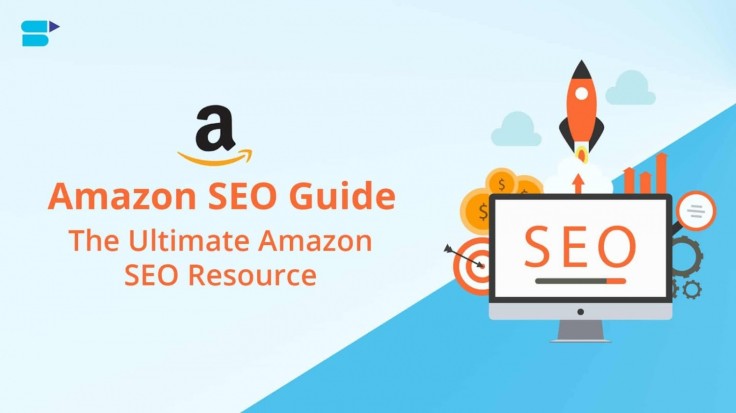
When buyers visit Amazon, it is often with one goal in mind; to make a purchase. In most instances, the buyer doesn't have a particular brand in mind. For Amazon sellers, this is often an opportunity. However, making the best use of this opportunity requires the optimal use of Amazon SEO services.
What is Amazon SEO?
SEO stands for Search Engine Optimization, and it defines a protocol used by individuals and organizations to improve their visibility on search engines. All search engines rank search results based on their algorithm, and Amazon is not left out.
The underlying search engine for Amazon is A9, and this algorithm uses several parameters in ranking the millions of products within the Amazon database whenever a buyer inputs a search query.
Understanding How the Amazon Search Engine Works
Whenever a buyer inputs a search query into the Amazon search bar, the results are usually arranged in different categories from the sponsored products, the search result, and other search filters as applied.
1. Amazon's Search Result Page
The Amazon Seller offers comprehensive information on the categorization of products on Amazon. Whenever a buyer inputs a product into the search bar, the results can be displayed in two ways;
The List View
This layout presents about 15-16 products on the result page.
Gallery View
This layout presents more products (24-25) on all the results page.
2. Sponsored Products on Amazon
Another notable class that is usually prominent on Amazon's search page is the Sponsored Products page. These sponsored pages can be found on different pages at different times. Typically, the sponsored products are observed on the top part of the product page and, most times, appear with the organic results of the search.
With the right keyword optimization techniques, it is crucial to optimize product listings for Amazon SEO. By using the right Amazon SEO tools and strategies, you can get your product to rank highly in these search results.
3. Understanding Amazon's Search Filters
Apart from the sponsored ads and organic results, there are also other filter fields. There are several filters ranging from the product category, Shipment method, color, brand, product condition, etc. These filters are sorted by the Amazon algorithm when mentioned in the product listing copy. So an optimized listing can play a vital role in optimization.
The implication of this for sellers is that it is essential to characterize your product using these categorizations in your listing copies. No wonder, an "optimized listing" plays a key role. If these details are not mentioned in the listings, then your product would not be categorized using these filters.
What's the connection between a search query and a URL?
In filtering a search result, Amazon often considers the listing's URL. The factors considered include;
Keywords
This basically refers to the word entered by the buyer. It basically determines the basic need of the user.
Node
All categories on Amazon have a unique number. This number is referred to using the 'Node' parameter. To get the correct ID of you're the category of your product, check the URLs of the categories on Amazon.
Brandtextebin
The "Brandtextebin" parameter is handy in the comparison of the performance of various products.
Amazon Search Engine Ranking
Many new sellers don't know the Amazon ranking system is an inverse rank system. This implies that a product with the worst sales ranks last and the product with the best sales are on top of the ranks. Although several Amazon users are still trying to pinpoint the specific factors that determine the sales rankings, the three important things every Amazon seller should, however, look out for include;
Since Amazon also features a search engine, some basic SEO tools are also applicable
Potential buyers will find your product category before finding your product specifically. Therefore, there is a need to improve your product's visibility with the right SEO tools and strategies.
As much as possible, you should work towards getting your product on the first page of search results. This improves your chances of sales.
The Amazon A9 Algorithm
A9 is the name of the Amazon product ranking algorithm. It is responsible for the order of the arrangement of search results on Amazon. These results are often influenced by the customer's previous purchases and shopping preferences. The A9 algorithm selects what Amazon displays to the potential buyer. These results are then arranged using;
Keyword relevance
Customer behavior and purchasing history.
The sales history of the product.
Apart from the factors listed above, several other factors are considered in the ranking, although Amazon does not disclose the factors considered in the ranking. However, over the years, some experimentation has shown certain techniques to be effective in improving product ranking.
Some of these factors include;
Price
A significant price difference compared to your competitor can be a major disadvantage.
Stock Levels
Products that run "out of stock" also negatively affect ranking. This, therefore, requires efficient inventory control as a seller on Amazon.
Product Listing
Listing your product is another important part of improving the ranking of your product. When listing your product, you should look out for the keywords and description.
IO Scout
To optimize your product's visibility on Amazon's search engine, there are several intricacies that should be considered. However, IO Scout offers an all-in-one software package that allows you to effectively use all the necessary SEO tools to achieve your sales target.
From product research and ranking tools to keyword research tools, IO Scout offers sellers access to all the tools needed to optimize their products on Amazon.
© Copyright 2025 Mobile & Apps, All rights reserved. Do not reproduce without permission.

















